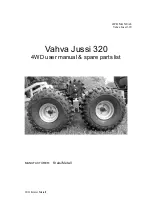
10
Ioline CrystalPress User Guide
How the CrystalPress Works
The
CrystalPress
machine creates a motif image through synchro-
nized
Transfer Sheet
and
Carriage
motion. Design files created in
programs like CorelDraw™ are imported into the
CrystalStudio
software from a local computer or file server.
Crystals or Rhinestones
are applied to the design in
CrystalStudio
then motif data are sent to
the
CrystalPress
via a USB or serial connection.
When the machine receives data, the electronic logic system trans-
lates the instructions into X-Axis (
Transfer Sheet
) and Y-Axis (
Car-
riage
) motion and uses digital feedback to ensure accuracy.
Crystals are transferred from
Sorter Bowls
with the
C-Stick
. The ma-
chine compares the
Sorter Wheel
stone size with
Layer
assignments in
CrystalStudio(
error displayed on mismatch). This user must load
the
CrystalPress
Sorter Bowls
with the correct stones.
LEFT EDGE OF PLOT
LO
WER EDGE OF PL
O
T
Y
X
Origin at right side of machine
and lower left in design file
Right side of
CrystalPress
Coordinates
In this manual the right and left side refers to the right and left side
of the front of the machine. Design software may refer to the
Origin
as “lower left” because it is the lower left corner of a image when
viewed on screen. The plot is rotated 90 degrees counter clockwise
in the machine as shown in
Figure 3
therefore the lower left corner
of the plot is physically on the right side of the machine. This will
not affect how the machine is used but you might notice this rotation
when importing images into the
CrystalStudio
.
Work flow and data types for making a motif.
Figure 2.
Design
File
Crystal-
Studio
Crystal-
Press
Finished
Motif
Crystal
Placement
Motif
Data
PLT or
DXF
Left side of
CrystalPress
The X and Y axes and origin (top view).
Figure 3.
CrystalStudio
checks that the
stone sizes assigned to design
Layers
match the
Sort Wheels
in
the
CrystalPress
. It is up to the
user to assure that the proper
size stones are loaded into the
Sorter Bowls
.
Note
i











































